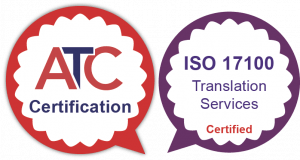Nowadays, it is highly likely that there will be a need for you to localise your content in order to drive new growth for your business. The question then is how to do it in the most cost-effective and timely way. It is in both your and a language service provider’s best interests to minimise project overheads, so that you are not paying for potentially unnecessary work, and so that the provider can focus on what they do best – translation and localisation rather than preparation.
There are a number of areas where these overheads can be minimised, and below we’ve put together a list of several which can make a difference to the smooth execution of your projects.
- Providing translation-ready files: not all formats are created equal! When we are provided with a scanned copy of a file which we are unable to edit directly, we may need to charge for any extraction or formatting work which may be necessary in order to produce the text for quotation and then translation. Common culprits are scanned financial reports, marketing materials and promotional image assets. If we are not sent the original layered files (EPS, Photoshop, etc.), we will have to type out the text manually or perform optical character recognition on the text in order to assess the volume and therefore provide a quotation.
- Establishing the text for translation right from the outset: often, we find that clients send several files to us for translation, but we later learn that they only actually require translation for certain parts of the text. Since translation is generally based on the number of words to be translated, any way in which the volume of text can be reduced will help lower costs and speed up turnaround time.
- Keeping repetition to a minimum: when we are sent press releases or web sites, there is often text which is repeated multiple times across different documents or pages (think of “about XYZ company” paragraphs at the end of press releases or menu and sidebar blocks on each page of web sites). If we are only sent these once, then that can help to reduce the volume. However, be careful with text which appears in different contexts. If your system combines short strings such as “Your application is” and “complete”, it may not be possible to reuse the word “complete” with a different sentence in other languages. There may be a different grammatical agreement needed, or it may just not be the same word which needs to be used in other languages in different contexts. We can take a look at the sort of repetitions which exist in your files and establish if some of the text can be re-utilised.
- Choose your content carefully: whereas you may have a huge quantity of resources available in English or another source language, which you have built up over a number of years, is it necessary to translate all of it from the outset? Many of our clients produce a slimmed down version of their website, carefully selecting their best case studies and white papers to illustrate the point in their target market. It may be worth testing the effectiveness of certain content types in a target market before going “all in” with translating the English materials. Even better, if you have an existing client in the target market, it could be worthwhile approaching them for an even more locally relevant and already localised case study or testimonial in their native language – that then avoids the need for a translation in the first place!

This list is by no means exclusive, so if you are considering translating your content, please do give us a call or send us an e-mail if you would like to discuss your needs, or would like some input from us when putting together a localisation strategy.

